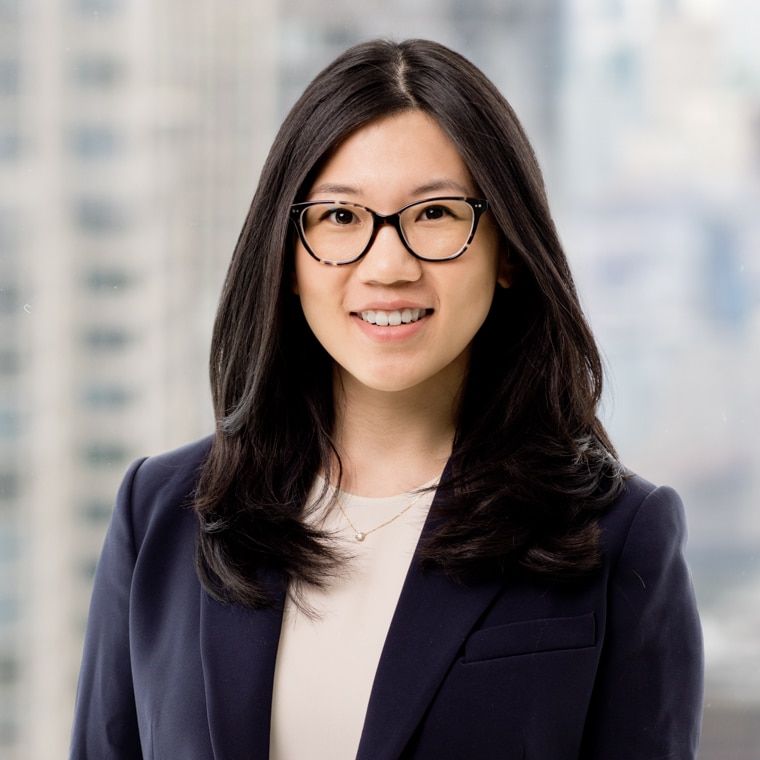Potential Implications of US Copyright Office Determination on AI-Generated Work
Matthew Ferraro, Natalie Li, Louis Tompros, Ariel Soiffer / May 4, 2023Matthew F. Ferraro, a senior fellow at the National Security Institute at George Mason University, is a Counsel at WilmerHale; Natalie Li is a Senior Associate, and Ariel Soiffer and Louis W. Tompros are Partners at WilmerHale.
In the past several weeks, the U.S. Copyright Office issued both a copyright decision and a policy statement establishing important guidelines for how copyright applies to works created through the application of artificial intelligence (AI).
First, in its February 2023 decision regarding a graphic novel comprised in part of images generated by the AI art platform Midjourney, the Copyright Office reiterated the well-established standard that only works created by a human author, with at least a minimal degree of creativity, are protectable by copyright. In that case, the Copyright Office concluded that images that had been created solely by Midjourney in response to textual prompts entered by a human were not protected by copyright.
Second, in a March 2023 formal policy statement, the Copyright Office wrote that AI-generated work may be protected by copyright if a human is sufficiently involved in the creative process. Sufficient human involvement may include selecting or arranging AI-generated material in a creative way or modifying material after it is created by AI.
Taken together, the ruling and the guidance underscore the importance of human-involved creation in AI-generated work for the work to be able to enjoy copyright protection. The Copyright Office left the door open to revisiting its guidance as this cutting-edge technology develops further.
1. Zarya of the Dawn Registration Decision
On September 15, 2022, the Copyright Office initially granted Kristina Kashtanova’s copyright registration application for the graphic novel Zarya of the Dawn. However, following social media posts and news coverage revealing Kashtanova’s use of Midjourney to generate the work’s images, the Copyright Office threatened to rescind the registration and invited Kashtanova to submit supplementary information detailing her use of the AI art generator and explaining why the registration should stand.
Kashtanova, through counsel, submitted her response on November 21, 2022, making two arguments. First, she argued that she authored every aspect of the work, using Midjourney merely as an assistive tool to achieve the desired images – much like how a photographer uses a camera, or a graphic designer uses Adobe Photoshop. Second, in the alternative, Kashtanova argued the graphic novel was a copyrightable compilation because she selected, coordinated, and arranged the text and images.
On February 21, 2023, the Copyright Office issued its decision. The Copyright Office concluded that Kashtanova “is the author of the Work’s text as well as the selection, coordination, and arrangement of the Work’s written and visual elements,” but that the Midjourney-generated images did not constitute “human works of authorship” as required by the Copyright Act for a work to be protected by copyright.
The Copyright Office found that Kashtanova “‘selected, refined, cropped, positioned, framed, and arranged’ the images in the Work to create the story told within its pages,” and that these elements are “the product of human authorship” warranting copyright protection. But the Copyright Office held that the individual images did not meet the human authorship requirement.
Proponents of synthetic art quickly criticized this decision as a significant setback for creators of AI art and as an apparent proscription against copyright protection for AI-assisted output writ large. However, the holding is narrower than some commentary suggests. In its decision, the Copyright Office cautioned that its determination is “based on the specific facts” Kashtanova provided about her use of Midjourney, and the Copyright Office focused on the limited circumstances surrounding the images’ creation.
First, the Copyright Office analyzed the degree of control Kashtanova had over the outputs generated by Midjourney. Kashtanova’s “core creative input” was the entering of text prompts into the Midjourney platform to produce the images. The prompts influence the outputs but do not ultimately dictate a specific result. According to the Copyright Office’s analysis, textual prompts are essentially “suggestions” akin to search engine results, which also result from text prompts. As such, Midjourney users cannot guarantee that a particular prompt will generate a particular visual output.
Second, the Copyright Office pointed to other forms of creativity that warrant registration, including photographers that “select what visual material to modify, choose which tools to use and what changes to make, and take specific steps to control the final image such that it amounts to the artist’s ‘own original mental conception, to which [they] gave visible form.’” By contrast, Midjourney users simply do not have this level of control. Kashtanova, for example, prompted Midjourney to generate an image of “dark skin hands holding an old photograph,” but she had no control over the precise color or shape of the hands, the details of the photograph, or the way the hands would hold it. Because of the “significant distance” between the entering of the prompts and the ultimate images generated, the Copyright Office found Kashtanova lacked sufficient control over the images to be considered the “master mind” behind them, and thus, the Midjourney-generated images lacked the requisite human authorship to warrant copyright protection.
Finally, the Copyright Office acknowledged the possibility that “other AI offerings that can generate expressive material operate differently than Midjourney does.” Accordingly, works generated in part by other AI platforms—perhaps technologies that afford users a greater degree of control over the final outputs—may have a protectable copyright, with such determination to be made in the future.
The Copyright Office decision leaves open whether someone else can copy the character of Zarya, since the Midjourney-generated images of that character are not protected by copyright. Because Zarya’s character arguably arises from the combination of images in the novel and the personal qualities described in the work, a third party may not be able to freely copy the character.
The recent Seventh Circuit decision in Klinger v. Doyle Estateis instructive. There, the Court of Appeals held that the characters of Sherlock Holmes and Dr. Watson, as depicted in Arthur Conan Doyle’s works published before 1923, were in the “public domain,” such that creators were free to use these characters and their characteristics without authorization from or payment to the Doyle Estate. However, elements introduced in later registered works by Doyle, such as the characters’ emotions and relationships, remained protected by copyright law.
Likewise, because the images of Zarya are not protected, others will likely be free to copy or prepare derivative works of the illustrations in the novel, but they may not be permitted to engage in the unauthorized copying of Zarya’s character (e.g. her image in combination with personal characteristics) as a whole.
2. New Guidance on Works Generated in Part by AI Technology
The Copyright Office followed the decision on Zarya of the Dawn with a formal policy statement issued on March 16, 2023, seeking to clarify its practices for examining and registering works containing AI-generated material. The Copyright Office reiterated its position that autonomously AI-generated works, absent any human involvement, cannot be copyrighted, because no human “authors” them. With respect to works partially created by AI, the Copyright Office states that “[t]he answer will depend on the circumstances, particularly how the AI tool operates and how it was used to create the final work.”
The Copyright Office notes, as an example, that “when an AI technology receives solely a prompt from a human and produces complex written, visual, or musical works in response, the ‘traditional elements of authorship’ are determined and executed by the technology—not the human user.” Where the AI technology is left to “determine the expressive elements of its output,” the resulting material is not the product of human authorship and thus not registerable. On the other hand, a work containing AI-generated material may be protected by copyright if it contains sufficient human authorship, such as where a human “select[s] or arrange[s] AI-generated material in a sufficiently creative way,” or where the artist modifies AI-generated material to meet the standard for copyright protection.
Notably, the Copyright Office states (emphasis added): “Based on the Office’s understanding of the generative AI technologies currently available, users do not exercise ultimate creative control over how such systems interpret prompts and generate material.” The instructions “function more like instructions to a commissioned artist.” The systems do not offer users “ultimate creative control over how such systems interpret prompts and generate material.” This suggests that the Copyright Office may conclude that outputs from a generative AI platform that does offer these controls may be protectable.
3. Recommendations
For now, users of generative AI platforms, like Midjourney, should ensure sufficient human involvement in the creation of their works, lest the Copyright Office deem them unprotectable by copyright. Individuals and companies seeking copyright protection for AI-generated works should carefully document the extent of their use of the AI platform and of human input, and they should work with intellectual property counsel to ensure adequate protection for their works.
By the same token, AI images generated by tools solely from textual prompts are likely unprotectable, which could lead to a bifurcation in the market for AI software: work generated using AI that involves sufficient human editing and finishing likely will be protectable, while AI created by everyday users that lacks such human input likely will not be. Generative AI platform companies may want to consider whether to provide notices to users that works generated through their platforms may not be protectable and may want to consider whether there are ways to encourage sufficient human input to meet the standards for authorship.
Authors




